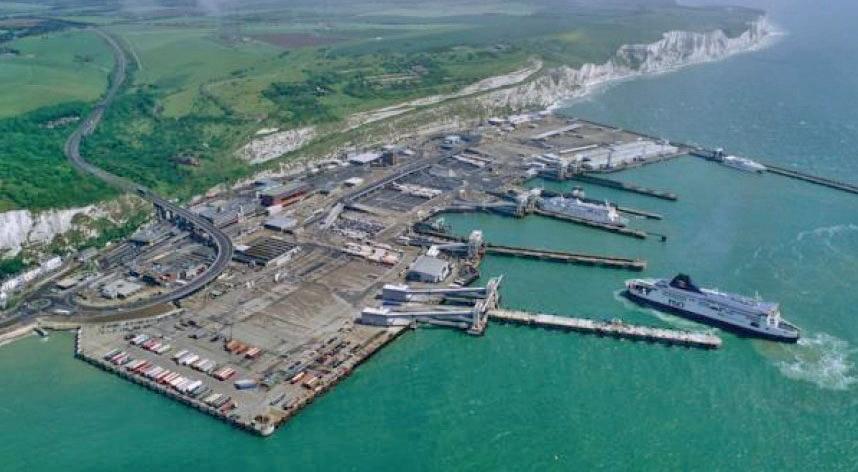
3 minute read
The Environmentalist
CHARLES HAINE
Maritime news pages are awash with talk of ‘green corridors’. It Is a great move to set them up now because zero-emissions’ ships won’t enter the market until 2030. Under the guise “if you build it, they will come,” there’s time to get organised on transforming these key arteries between specifi c hubs, to embrace new technologies and clean fuels. But there are also huge challenges.
The annual festival of climate compromise is almost upon us: on 6 November, COP27 starts in Egypt. A long year ago, in Glasgow, shipping rose to prominence. The Clydebank Declaration, signed by 22 countries, called for six green shipping corridors (GSC) by 2025. Proponents were charged with ‘facilitating partnerships’ and ‘taking steps’ to decarbonise routes between at least two ports in signatory countries.
What else makes a GSC, and what does green – in this seagoing context – look like? Bearing in mind there are no zero-emission vessels in play at commercial scale, the emphasis is going to be on modifying places and building networks that offer key services (e.g., alternative fuels, plug-in charging) for the next-gen’ of cargo vessel.
The Energy Transition Commission for the Getting-toZero Coalition points out the required factors for success: getting the right stakeholders into collaboration mood; bunkering infrastructure; customer demand; and new policy, including incentives.
Maritime safety has to be embedded too, so there’s no time to delay. However, this is not easy when government policies aren’t clear (or available), cross-industry partners need to be aligned (which takes time), and investors need to know returns will be adequate while completing meaningful diligence before imparting millions. Remember that net-zero is a decades long journey rather than a near-term outcome. To be realistic, transition fuels and tech are going to be a bridge in all this,
THUMBS UP TO GREEN CORRIDORS BUT BIG CHALLENGES LIE AHEAD
8 As part of comprehensive plans to decarbonise, the Port of Dover has set the goal of establishing the UK’s fi rst high volume green shipping corridor with a focus on select cross channel operations
and that can water down the green credentials.
They’re not holding back though, citing two major opportunities: the Asia-Europe (Singapore-Rotterdam) container route and the Australia-Japan iron ore route.
The latter might in fact be called “the irony route,” on the basis that steelmaking generates around eight per cent of global CO2 emissions, over shipping’s three per cent. Yes, it’s a good idea to try and decarbonise an energy intensive sector but are we looking at real change and innovation or simply enhancing the ‘business-as-usual’ situation?
‘Green’ evokes images of clean air and healthy lifestyles, no or low impact (e.g., from noise, lighting) on receptors, and the proliferation of nature. Surely marine biology deserves a place on the bill, yet biodiversity is barely mentioned in the grand announcements and plans for new green shipping routes.
REALITY OR SPIN?
From the outset, the use of the word green in this context smacks of marketing and spin, a type of greenwash, or green ship-wash if you like! Some reputations in oil & gas and banking through to aviation and retail are being hammered at the moment for false claims on sustainability benefits.
In reality, progress is being made with more pace in local and regional settings. Nearshore/ coastal routes and inland navigation networks have shorter distances and proven connectivity, so are well-placed to adopt step-change. Strides towards the provision of smart energy networks and electrification have been made in some key river networks of Europe.
In these settings, it is also easier to measure positive impact, evidenced in improved local air quality (and thus human health), avoiding damage to marine life, while delivering cleaner and efficient cargo and passenger transfer.
The supply-chain understanding and actionoriented mindset of ports will help deliver successful, lower impact, corridors. In January, the C40 Cities group announced a trans-Pacific GSC between the proactive ports of Los Angeles and Shanghai with shipping lines and cargo owners partnering. The Port of Dover intends to become the world’s first high volume GSC.
COLLABORATION KEY
Collaboration with a wide range of stakeholders is key to creating mutual benefits and investment. A good example is National Maritime’s (UK) Blue Space Advanced Port, Energy & Logistics Centre concept. This can support ambitious strategic plans by connecting-in spin-off businesses and entrepreneurial start-ups. By stimulating green economy employment and creating new streams of economic value in port areas, and in locations where renewable sources of energy are available, we will truly be starting to anchor greener corridors and logistics into the lower-carbon future.










